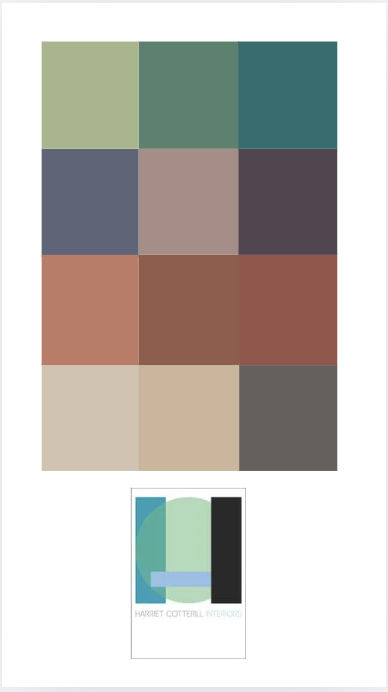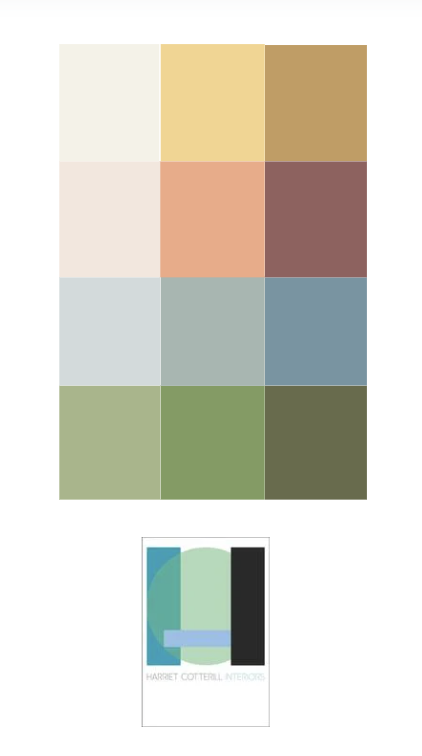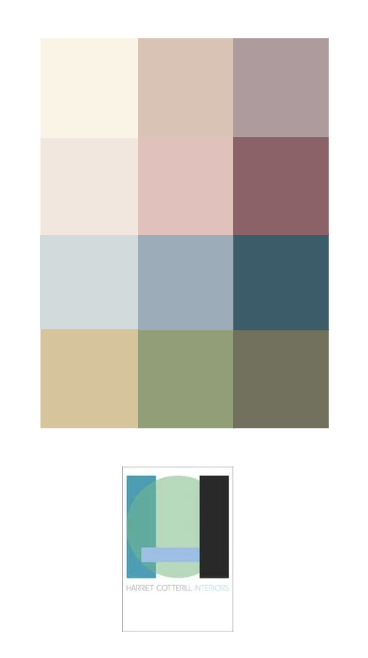My Guide Guide to Choosing Paint Colours by Room Orientation
Featuring: Farrow & Ball, Little Greene, and Edward Bulmer
Understanding Light and Colour in Interiors
Natural light dramatically changes how we perceive colour. Here's how:
Key Factors That Influence Colour Appearance:
Time of Day: Morning light is cooler and sharper; afternoon light is warmer and softer.
Window Direction: North-facing rooms get cooler, diffused light; south-facing rooms receive warm, consistent sunlight.
Surface Reflectivity: Matte finishes absorb light; glossier paints reflect it.
Surrounding Elements: Flooring, upholstery, and even window glass can cast coloured reflections on your walls.
NORTH-FACING ROOMS
Light Qualities:
Grey, indirect light all day
Cooler and dimmer, especially in the morning
Shadows appear more bluish
Colour Strategy:
Avoid cold or stark whites—they can feel sterile.
Choose warm, rich tones or deep, moody hues to enhance coziness.
Warm neutrals and earthy tones add balance.
Paint Colour Suggestions:
Brand Colour Tone & Description
Farrow & Ball Sulking Room Pink Romantic muted rose
Farrow & Ball Oval Room Blue Deep blue-green with grey
Farrow & Ball London Clay Earthy taupe with mauve
Farrow & Ball Pelt Dramatic aubergine purple
Little Greene Woodland Deep forest green
Little Greene Dark Lead Colour Warm charcoal
Little Greene Mushroom Warm, greyed-off neutral
Edward Bulmer Red Ochre Earthy red
Edward Bulmer Brick Rustic terracotta
Edward Bulmer Ochre Mustard yellow warmth
SOUTH-FACING ROOMS
Light Qualities:
Bright, golden light throughout the day
Makes colours appear warmer
Can intensify bold tones
Colour Strategy:
Most colours thrive here—bold, saturated, or dark shades especially.
Use cooler tones to balance warmth.
Whites and off-whites look creamy or golden in southern light.
Brand Colour Tone & Description
Farrow & Ball India Yellow Rich mustard gold
Farrow & Ball Bancha Olive green
Farrow & Ball Down Pipe Deep slate with blue
Farrow & Ball Stone Blue Warm mid-blue
Little Greene Ashes of roses Soft brownish redmm
Little Greene Basalt Inky navy
Little Greene Pompeian Ash Soft charcoal
Little Greene Aquamarine Deep Jewel-toned teal
Edward Bulmer Invisible Green Botanical, Victorian green
Edward Bulmer Blue Verditer Powdery aqua
Edward Bulmer Jonquil Gentle, happy yellow
EAST-FACING ROOMS
Light Qualities:
Bright and cool in the morning
Loses warmth in the afternoon
Blue undertones are more apparent
Colour Strategy:
Choose warm or sunlit colours that glow in early light.
Soft pinks, yellows, or peaches are ideal.
Neutrals with a hint of warmth stay friendly all day.
Brand Colour Tone & Description
Farrow & Ball Setting Plaster Subtle blush
Farrow & Ball Pink Ground Warm, earthy pink
Farrow & Ball Hay Soft straw yellow
Farrow & Ball Yeabridge Green Fresh and organic
Little Greene Light Peachblossom Delicate coral pink
Little Greene Stock Pale creamy neutral
Little Greene Olive Colour Warm, dusky green
Edward Bulmer Straw Gentle yellow beige
Edward Bulmer Drab Green Green-grey warmth
Edward Bulmer Apricot Soft, juicy orange tone
WEST-FACING ROOMS
Light Qualities:
Cool and soft light in the morning
Golden light in the evening
Dramatic contrast from day to dusk
Colour Strategy:
Choose cooler tones if used in the morning.
Use warmer hues for evening-focused rooms.
A good place for neutrals, greens, and complex pinks.
Brand Colour Tone & Description
Farrow & Ball Light Blue Soft duck egg blue
Farrow & Ball Skimming Stone Warm grey-beige
Farrow & Ball Calluna Light lilac-grey
Farrow & Ball Jitney Sandy beige
Little Greene Sage Green Warm muted green
Little Greene Celestial Blue Silvery sky blue
Little Greene Shirting Clean, soft white
Edward Bulmer Pale Naples Warm buttercream
Edward Bulmer Lead Colour Earthy slate green
Edward Bulmer Silk Creamy white with warmth
Multi-Aspect Rooms & Dual Light Sources
Understanding Dual-Aspect Light
Dual- and multi-aspect rooms receive light from more than one direction, which causes colour to shift throughout the day—often dramatically. For example:
East + South: Bright, golden morning light; warmth deepens midday.
North + West: Muted cool light in the morning, golden hues in the evening.
Corner or L-shaped rooms: Light moves across the space; parts may feel shaded while others are sunlit.
Challenges:
Colour appears different depending on wall orientation
Can feel disjointed if not balanced




